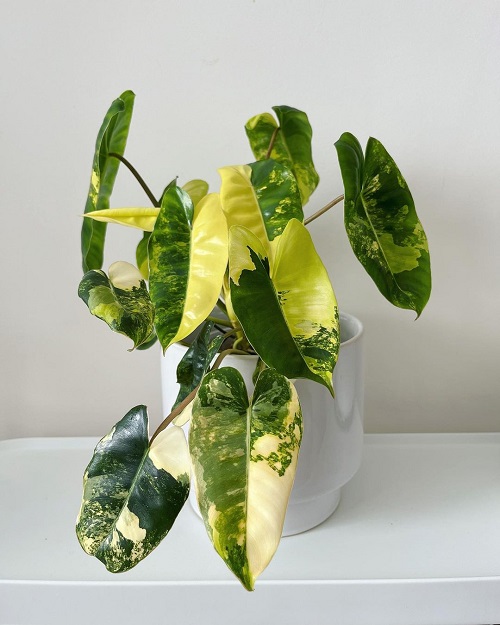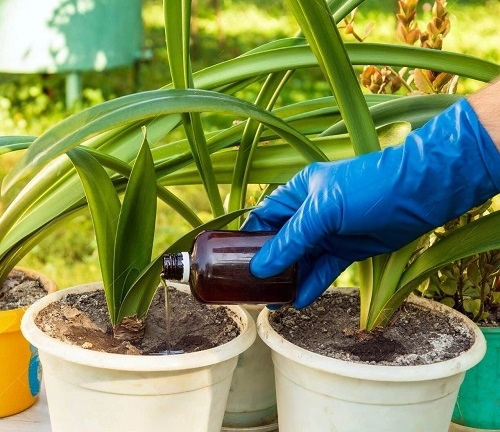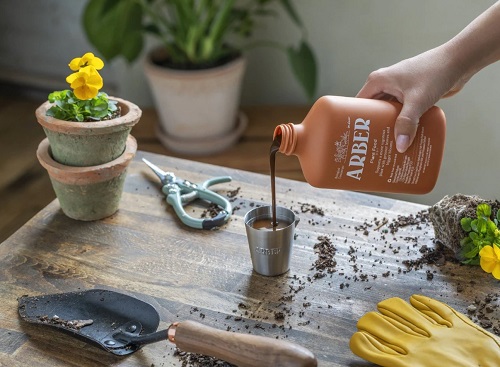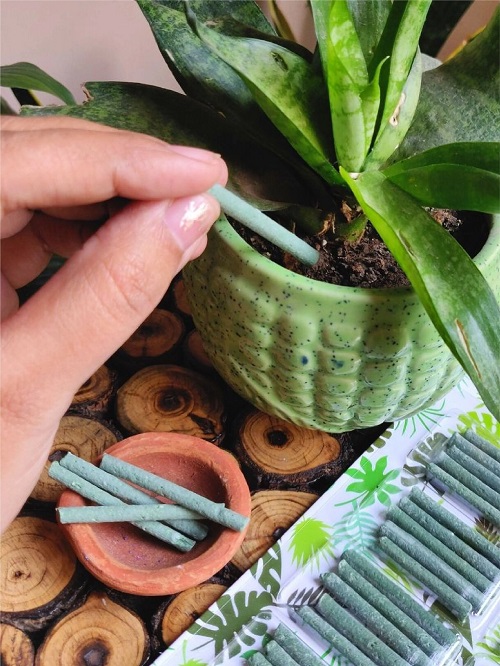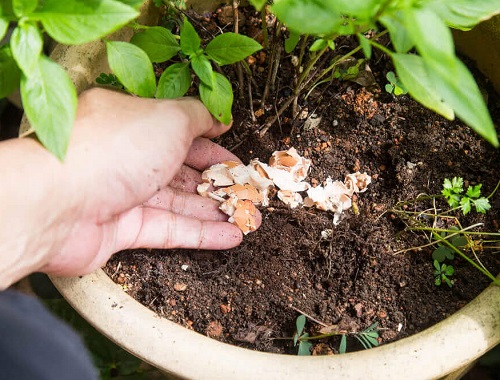Wondering what could be the Best Plant Food for Indoor Plants? We have prepared an exclusive list to help you out!
Are your indoor plants looking a little lackluster? It could be that they’re yearning for more than just water and sunlight. What if you could turn those drooping leaves into vibrant, healthy greenery with just a small tweak to your plant care routine? You’re in the right place! We bring you a comprehensive guide on the Best Plant Food for Indoor Plants!
DIY Dandelion Fertilizer Recipes | Fertilizer Made From Weeds
Best Plant Food for Indoor Plants
1. All-Purpose Liquid Fertilizer
What it is: All-purpose liquid fertilizers are versatile plant foods available in liquid form. They contain a balanced mix of essential nutrients like nitrogen (N), phosphorus (P), and potassium (K).
Why it’s great: Liquid fertilizers are convenient and easy to apply. They are quickly absorbed by plant roots, providing a rapid nutrient boost. Their balanced formula suits a wide range of indoor plants with varying nutrient needs.
Application: Dilute the liquid fertilizer according to the package instructions, usually at a ratio of fertilizer to water. Apply during the growing season, typically every 2-4 weeks, after diluting it to 1/2 of its strength. Water the plants thoroughly after application to ensure even distribution of nutrients.
Best Options:
- Miracle-Gro Water Soluble All Purpose Plant Food
- Dyna-Gro Liquid Grow
- Jack’s Classic All Purpose Fertilizer
2. Slow-Release Granular Fertilizer
What it is: Slow-release granular fertilizers come in pellet or granule form. They contain a balanced mix of nutrients but release them gradually over time.
Why it’s great: These fertilizers are convenient for busy plant owners since they require less frequent application. They provide a steady, long-lasting nutrient supply, promoting sustained growth.
Application: Sprinkle the granules on the soil’s surface, following the package guidelines for the recommended dosage. They typically last for several months, reducing the need for frequent reapplication.
Best Options:
- Osmocote Smart-Release Plant Food
- Scotts Turf Builder
- Miracle-Gro Shake ‘N Feed
- Jobe’s Organics All-Purpose Granular
- Espoma Plant-tone
Dried Banana Peel Powder Fertilizer at Home for Any Plant
3. Organic Plant Food
What it is: Organic plant food is derived from natural sources such as compost, fish emulsion, seaweed, or animal manure.
Why it’s great: Organic options are environmentally friendly and provide a gentle, slow-release source of nutrients. They improve soil health by fostering beneficial microorganisms and are especially suitable for organic gardening practices.
Best Options:
Compost Tea
- Advantages: Rich in nutrients and microorganisms, improves soil structure.
- Application: Dilute with water and apply directly to the soil or as a foliar spray.
Worm Castings
- Advantages: Non-burning, rich in nutrients, and enhances soil microbial activity.
- Application: Mix into the top layer of soil or use as a top dressing.
Fish Emulsion
- Advantages: High in nitrogen, phosphorus, and potassium, quick nutrient release.
- Application: Dilute with water and apply to soil; avoid direct contact with leaves.
Bone Meal
- Advantages: Rich in phosphorus, promotes strong root development.
- Application: Incorporate into the soil at planting time or as a top dressing.
Seaweed Extract
- Advantages: Full of micronutrients, promotes plant health and stress resistance.
- Application: Available in liquid form, dilute with water and apply to soil or leaves.
Bat Guano
- Advantages: High nitrogen content, promotes healthy growth and flowering.
- Application: Use sparingly and incorporate into the soil or as a tea.
Cottonseed Meal
- Advantages: Slow-release, high in nitrogen, good for acid-loving plants.
- Application: Mix into the soil before planting or use as a top dressing.
4. Specialty Fertilizers for Specific Plants
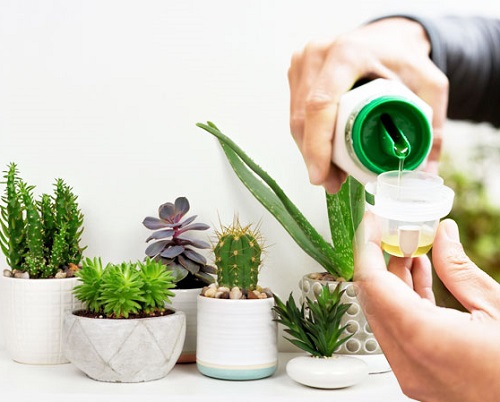
What it is: Specialty fertilizers are formulated to meet the unique nutrient requirements of specific indoor plants. Examples include orchid, succulent, and cactus fertilizers.
Why it’s great: These fertilizers address the precise needs of particular plant types, ensuring optimal growth, blooming, and overall health.
Application: Follow the package instructions for specific plant types. These specialty blends are designed to cater to the specific requirements of the chosen plants.
Best Options:
- Miracle-Gro Orchid Food
- Osmocote Rose & Flower Food
- Espoma Tomato-tone
- FoxFarm Tiger Bloom for Flowering Plants
- Jobe’s Organics Fruit & Citrus Fertilizer
- Scotts Turf Builder for Lawns
- Dr. Earth Organic Rhododendron, Azalea & Camellia Fertilizer
19 of the Best Homemade Fertilizers for Tomatoes
5. Water-Soluble Fertilizer Sticks
What it is: Fertilizer sticks or spikes are pre-measured, water-soluble nutrients encased in sticks or spikes that you insert into the soil.
Why it’s great: They provide a slow-release source of nutrients and are incredibly convenient for those with a busy lifestyle. Fertilizer sticks ensure a consistent nutrient supply.
Application: Simply insert the sticks or spikes into the soil around the plant’s root zone, following the package instructions. They gradually release nutrients as they dissolve.
Best Options:
- Miracle-Gro Indoor Plant Food Spikes
- Jobe’s Fertilizer Spikes for Flowering Plants
- Osmocote Indoor/Outdoor Plant Food Spikes
- Schultz All Purpose Plant Food Spikes
- J R Peters Jack’s Classic No.1.5 Spikes
6. Homemade Plant Food
What it is: Homemade plant food can be created using natural ingredients.
Why it’s great: Homemade options are cost-effective and eco-friendly. They can work well if prepared and used correctly.
Application: Research and follow specific recipes for homemade plant food tailored to your plant’s needs. Homemade fertilizers are often applied sparingly and mixed into the soil or used as a top dressing.
Best Options:
- Banana Peels: Rich in potassium, banana peels can be buried near the base of potassium-loving plants like roses.
- Coffee Grounds: Acid-loving plants such as azaleas and blueberries can benefit from the nitrogen in used coffee grounds.
- Eggshell Tea: Boiling crushed eggshells in water provides calcium, essential for strong cell wall development.
- Epsom Salt: A water and Epsom salt mixture supplies magnesium and sulfur, essential for chlorophyll production and plant growth.
- Fish Tank Water: Rich in nitrogen and other nutrients, old fish tank water is an excellent plant food.
7. Micronutrient Supplements
Micronutrients are elements needed in smaller quantities compared to macronutrients, but they are equally crucial for plant growth. Some common micronutrients include:
- Iron (Fe): Vital for chlorophyll synthesis and oxygen transport.
- Zinc (Zn): Aids in enzyme function and protein synthesis.
- Copper (Cu): Important for metabolic processes and helps in activating enzymes.
- Manganese (Mn): Crucial for photosynthesis and nitrogen metabolism.
- Boron (B): Needed for cell division and sugar transport.
Which Plants Benefit from Micronutrient Supplements?
- Fruiting Plants: Tomatoes, peppers, and cucumbers benefit from micronutrients for better fruit development and taste.
- Leafy Greens: Plants like spinach and lettuce need micronutrients to optimize photosynthesis and nutrient uptake.
- Ornamental Plants: Flowering plants and shrubs often require micronutrients to enhance the vibrancy of their flowers and leaves.
- Citrus Trees: These trees need micronutrients to combat deficiencies that can lead to symptoms like yellow leaves and poor fruiting.
- Acid-Loving Plants: Plants like blueberries and azaleas often grow in soils that are naturally low in certain micronutrients, so supplements can be particularly beneficial.
Why it’s great: These supplements are crucial for addressing specific micronutrient deficiencies in plants, especially those with yellowing leaves or other signs of deficiency.
Application: Apply micronutrient supplements as directed on the package. Usually, only small quantities are needed, and they can be mixed with water and applied to the soil.
Want to Make Organic Fertilizers from Kitchen Scraps? Click here
Best Options:
- Southern Ag Chelated Liquid Iron
- General Hydroponics CALiMAGic
- Microbe Life Hydroponics Microbial Nutrients
- Dyna-Gro Pro-TeKt
- FoxFarm BushDoctor Boomerang
- Advanced Nutrients Micro
Conclusion
Choosing the best plant food for your indoor plants depends on factors like the type of plants you have, their specific nutrient needs, and your personal preferences. Regardless of the type of plant food you choose, remember to follow package instructions carefully.
Regular feeding, combined with proper watering and sunlight, is key to helping your indoor plants flourish and thrive, bringing natural beauty into your home. Monitor your plants’ responses to ensure they are receiving the right nutrients, and adjust your feeding regimen as needed.

